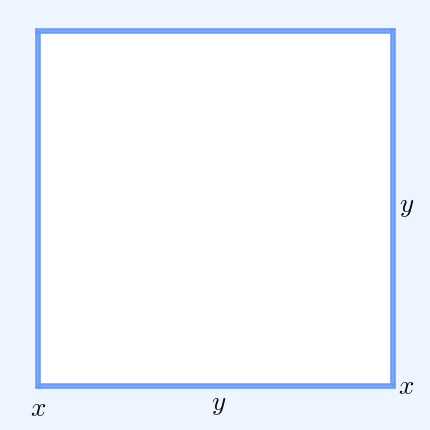
In
mathematics
Mathematics is an area of knowledge that includes the topics of numbers, formulas and related structures, shapes and the spaces in which they are contained, and quantities and their changes. These topics are represented in modern mathematics ...
, the inequality of arithmetic and geometric means, or more briefly the AM–GM inequality, states that the
arithmetic mean
In mathematics and statistics, the arithmetic mean ( ) or arithmetic average, or just the ''mean'' or the ''average'' (when the context is clear), is the sum of a collection of numbers divided by the count of numbers in the collection. The colle ...
of a list of non-negative
real numbers is greater than or equal to the
geometric mean
In mathematics, the geometric mean is a mean or average which indicates a central tendency of a set of numbers by using the product of their values (as opposed to the arithmetic mean which uses their sum). The geometric mean is defined as the ...
of the same list; and further, that the two means are equal
if and only if every number in the list is the same (in which case they are both that number).
The simplest non-trivial case – i.e., with more than one variable – for two non-negative numbers and , is the statement that
:
with equality if and only if .
This case can be seen from the fact that the square of a real number is always non-negative (greater than or equal to zero) and from the elementary case of the
binomial formula:
:
Hence , with equality precisely when , i.e. . The AM–GM inequality then follows from taking the positive square root of both sides and then dividing both sides by ''2''.
For a geometrical interpretation, consider a rectangle
In Euclidean plane geometry, a rectangle is a quadrilateral with four right angles. It can also be defined as: an equiangular quadrilateral, since equiangular means that all of its angles are equal (360°/4 = 90°); or a parallelogram containi ...
with sides of length and , hence it has perimeter and area . Similarly, a square with all sides of length has the perimeter and the same area as the rectangle. The simplest non-trivial case of the AM–GM inequality implies for the perimeters that and that only the square has the smallest perimeter amongst all rectangles of equal area.
Extensions of the AM–GM inequality are available to include weights or generalized means.
Background
The ''arithmetic mean
In mathematics and statistics, the arithmetic mean ( ) or arithmetic average, or just the ''mean'' or the ''average'' (when the context is clear), is the sum of a collection of numbers divided by the count of numbers in the collection. The colle ...
'', or less precisely the ''average'', of a list of numbers is the sum of the numbers divided by :
:
The ''geometric mean
In mathematics, the geometric mean is a mean or average which indicates a central tendency of a set of numbers by using the product of their values (as opposed to the arithmetic mean which uses their sum). The geometric mean is defined as the ...
'' is similar, except that it is only defined for a list of ''nonnegative'' real numbers, and uses multiplication and a root in place of addition and division:
:
If , this is equal to the exponential of the arithmetic mean of the natural logarithm
The natural logarithm of a number is its logarithm to the base of the mathematical constant , which is an irrational and transcendental number approximately equal to . The natural logarithm of is generally written as , , or sometimes, if ...
s of the numbers:
:
The inequality
Restating the inequality using mathematical notation, we have that for any list of nonnegative real numbers ,
:
and that equality holds if and only if .
Geometric interpretation
In two dimensions, is the perimeter of a rectangle with sides of length and . Similarly, is the perimeter of a square with the same area, , as that rectangle. Thus for the AM–GM inequality states that a rectangle of a given area has the smallest perimeter if that rectangle is also a square.
The full inequality is an extension of this idea to dimensions. Every vertex of an -dimensional box is connected to edges. If these edges' lengths are , then is the total length of edges incident to the vertex. There are vertices, so we multiply this by ; since each edge, however, meets two vertices, every edge is counted twice. Therefore, we divide by and conclude that there are edges. There are equally many edges of each length and lengths; hence there are edges of each length and the total of all edge lengths is . On the other hand,
:
 In
In  In
In